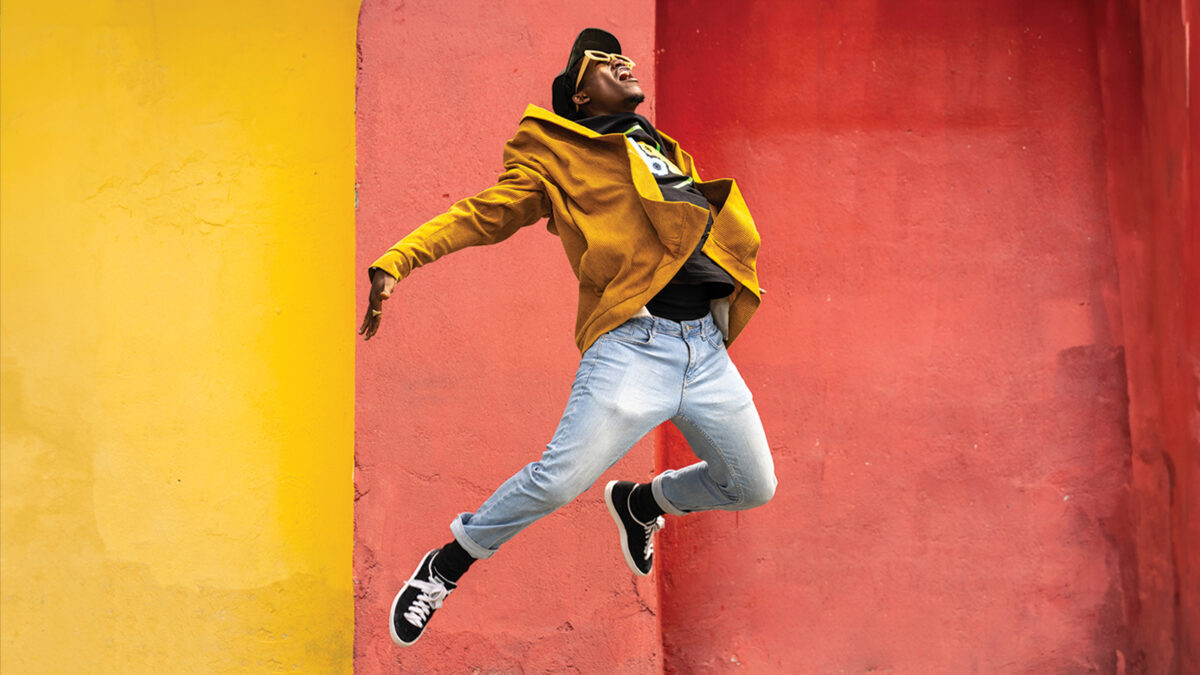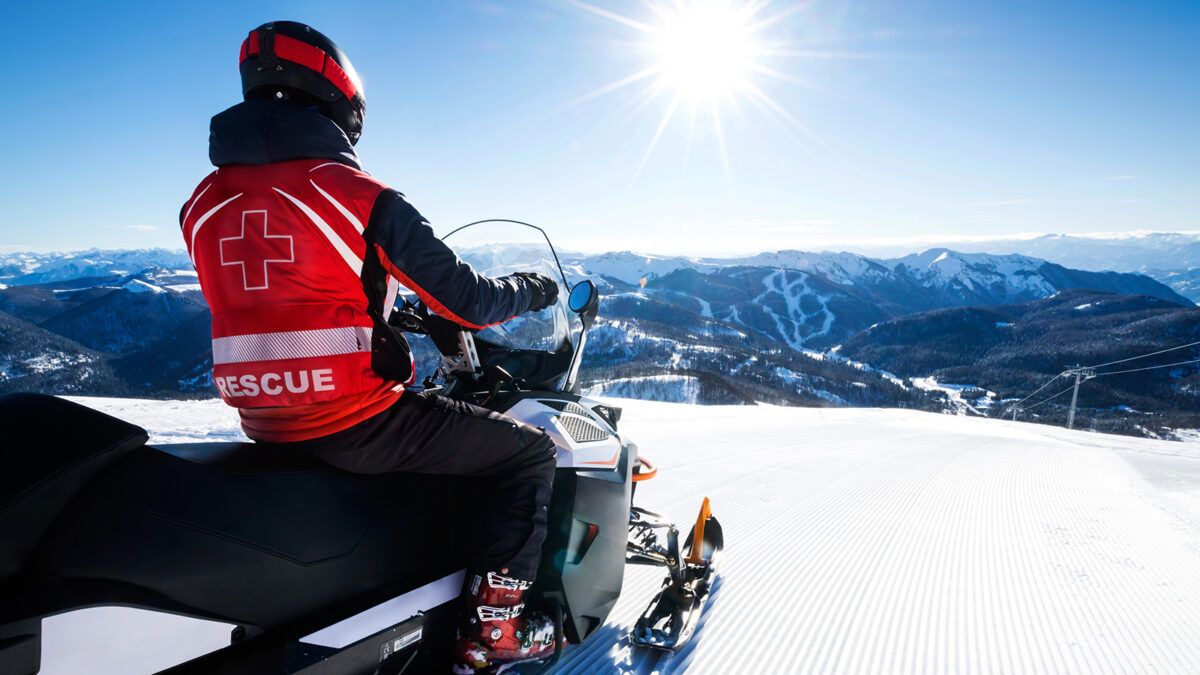
Is Movement the Answer to Your Writer’s Block?
April 2024
Download This Article (.pdf)
It is well known that physical movement is important for health. Engaging in regular physical activity can help us manage our weight, reduce our risk of disease, and strengthen our bones and muscles. But did you know that movement can also boost creativity? Legal work is intensely intellectual. It requires critical thinking, analysis, and creativity—the ability to generate “novel yet appropriate ideas.”1 Lawyers rely on creativity to answer difficult legal questions when, for example, developing a novel case theory, settlement offer, or provision for managing transaction risk.
Faced with a challenging issue, lawyers often default to grabbing a caffeine source and staying glued to a chair until we find the answer or solution. You may, however, be more likely to have that needed stroke of genius on a walk, after 15 minutes of movement, or—in an interesting twist—after experiencing the perception of movement in a virtual reality environment. Given the need for creative thinking in the legal profession and the sedentary nature of our work, let’s consider how the relationship between movement and creativity may be useful to your practice and well-being.
Does Movement Enhance Creativity?
Many people note anecdotally that movement helps them think.2 Some of history’s greatest thinkers—Aristotle, Virginia Woolf, and Albert Einstein, to name a few—were known for taking long walks to problem-solve. Henry David Thoreau famously wrote, “the moment my legs begin to move, my thoughts begin to flow.”3 But does movement actually improve creativity? Empirical research has tested this theory and found that physical movement can enhance creative potential. Creative-research scholars have primarily studied the effects of exercise on two thinking forms: divergent creativity and convergent creativity.4 Divergent creativity is the generation of novel ideas, whereas convergent creativity is ideating the best solution to a problem from known information.5 Studies show that physical movement can improve both divergent and convergent creativity, but the effect of exercise on a given person depends on several factors, including the intensity of the exercise and the person’s physical fitness.
For example, a 2014 study by Marily Oppezzo and Daniel Schwartz (Oppezzo study) found that walking at a comfortable pace had a positive effect on the divergent creativity of participants both during the activity and immediately thereafter.6 The study compared the creativity of participants while walking on a treadmill indoors for 12 minutes with the creativity of participants while sitting.7 Researchers measured participants’ divergent creative output using the “alternative uses test,” giving participants four minutes to come up with as many alternative uses as they could for a common object, like a button or a tire.8 Researchers then scored the answers for novelty and appropriateness.9 Among the 48 participants, 81% improved their creative output when walking, and the average increase in creative output was 60% greater when walking as compared with sitting.10 The study also found that the creative boost gained from walking had a lasting effect, continuing for at least 16 minutes after walking.11
Despite the impact on divergent thinking, participants in the Oppezzo study did not exhibit improved convergent thinking while walking.12 However, a 2022 study co-authored by Yuan Zhao (Zhao study) suggests that sustained, moderately intense exercise may improve convergent creativity.13 The Zhao study included 25 regular exercisers (people exercising at least 30 minutes, three times per week during the previous six months) and 25 light exercisers (people exercising fewer than three times per week during the previous six months).14 The participants were asked to perform a 25-minute sequence of aerobic exercises, including stepping in place, jumping rope, and performing jumping jacks, while maintaining a moderate intensity heart rate.15 Both the regular and light exercisers performed significantly better on a convergent thinking assessment five minutes after exercising than they did before exercising.16 In addition, the regular exercisers exhibited improved divergent thinking after exercising.17 Researchers posited that the regular exercisers may have experienced this extra increase in divergent creativity due to having better developed muscle memory that alleviated the conscious effort required to complete the activity, allowing their minds to wander.18
In addition to measuring the immediate impact of exercise on creativity, the Zhao study investigated whether enhanced creativity was present 30 minutes after exercise.19 The researchers found that there was no statistically significant difference in the quality of the participants’ creative performance before exercising as compared with that exhibited 30 minutes after exercising, but their reaction time had improved.20 Participants performed the 30-minute post-exercise assessment significantly quicker than the pre-exercise assessment.21
Accessibility and Movement to Promote Creativity
There are many accessible ways to engage in the multifaceted health and creativity benefits of movement. A 2020 study showed that the perception of movement, even without actual movement, can enhance creative capabilities.22 In that study, researchers tested the creative output of participants immersed in a virtual environment.23 Using a virtual reality headset, half of the participants were placed in a stationary virtual train car.24 The other half of the participants were placed in the same virtual train car but moving through a tunnel.25 Participants experiencing the moving train performed significantly better on divergent creativity tasks than those experiencing the stationary train.26 Specifically, in the alternate-use test described above, participants on the moving train generated a significantly greater range of ideas for a common object than the participants on the stationary train.27
The results of this study further suggest that riding in a (real-life) train, car, or other vehicle may also promote creativity. Similarly, studies have shown that divergent thinking performance is higher for participants pushed in a wheelchair than for participants sitting in a stationary chair.28 Movement occurs across a wide spectrum of activities, from seated or standing stretches to activities that result in high-intensity, cardio-based workouts. The type of movement most helpful to you may change over time and respond to changes in your health, age, interests, or ability. Consider whatever type of movement may be most useful or enjoyable to you and assess your level of satisfaction with your day-to-day relationship to movement.
Incorporating Movement Into Your Workday
To ensure you are bringing your best-thinking, most creative self to your matters, try these tips.
- Mix it up. Experiment with different types and lengths of movement breaks to find what activity, and in what amount, gives you the best mental boost. Depending on how often you exercise, you may find certain activities more readily promote creative thoughts than others. Also, try extending your movement break to 10 or 15 minutes, instead of just a lap around your office, to give yourself additional time to mull over the difficult question of the day. Don’t forget to incorporate movement breaks when working from home, as studies have shown that working from home correlates with significantly more sitting and less movement.[29]
- Tackle your toughest questions right after a movement break. Get the most out of your movement breaks by focusing on the problem you are trying to solve immediately after a break. The studies described above found that physical activity promotes creativity during and immediately after exercise. However, according to the Zhao study, the creativity boost may subside within a half hour after exercise.
- Add movement to your already planned work activities. Much of a lawyer’s work is done at a desk, but not all of it needs to be. You can incorporate movement into your practice without adding any time to your day. Consider taking phone calls while standing or walking. Take the stairs to your next meeting. Print to the far printer. Make your next meeting a walking or mobile meeting, walk a couple blocks farther for lunch, or invite a client for a lunch-hour walk.
Keeping Movement in Mind
Despite its many health benefits, it can be difficult to prioritize movement throughout the workday. Remember that movement is not just good for you—it’s good for your clients. Taking regular movement breaks will help ensure you are bringing your most creative self to your matters. So, the next time you get stuck, move!
For more well-being related strategies, visit the Colorado Lawyer Assistance Program (COLAP) website at www.coloradolap.org, or contact COLAP at info@coloradolap.org or (303) 986-3345 to request a free, confidential well-being consultation.
Related Topics
Notes
1. Oppezzo and Schwartz, “Give Your Ideas Some Legs: The Positive Effect of Walking on Creative Thinking,” 40(4) J. of Experimental Psych.: Learning, Memory, and Cognition 1142, 1142 (2014), https://doi.org/10.1037/a0036577.
2. Fritha et al., “Systematic Review of the Proposed Associations Between Physical Exercise and Creative Thinking,” 15(4) Eur.’s J. of Psych. 858, 871 (2019), https://doi.org/10.5964/ejop.v15i4.1773.
3. Thoreau, The Portable Thoreau 167 (Penguin Classics 2012).
4. Zhao et al., “Effects of Short-Term Aerobic Exercise on Creativity,” 44 Thinking Skills and Creativity 2 (June 2022), https://doi.org/10.1016/j.tsc.2022.101033.
5. Id. at 2.
6. Oppezzo and Schwartz, supra note 1 at 1142.
7. Id.
8. Id.
9. Id.
10. Id.
11. Id. at 1146.
12. Id. at 1144.
13. Zhao et al., supra note 4 at 1.
14. Id. at 4.
15. Id. at 3.
16. Id. at 5.
17 Id.
18. Id. at 6–7.
19. Id. at 8.
20. Id.
21. Id.
22. Fleury et al., “Studying the Effects of Visual Movement on Creativity,” 36 Thinking Skills and Creativity 4 (2020), https://doi.org/10.1016/j.tsc.2020.100661.
23. Id. at 3.
24. Id.
25. Id.
26. Id. at 3–4.
27. Id. at 4.
28. Oppezzo and Schwartz, supra note 1 at 1147–48.
29. Streeter et al., “From Bad to Worse: The Impact of Work-From-Home on Sedentary Behaviors and Exercising,” Stanford Center on Longevity (2021), https://longevity.stanford.edu/wp-content/uploads/2021/05/Sedentary-Brief.pdf.
“Studies show that physical movement can improve both divergent and convergent creativity, but the effect of exercise on a given person depends on several factors, including the intensity of the exercise and the person’s physical fitness.”


